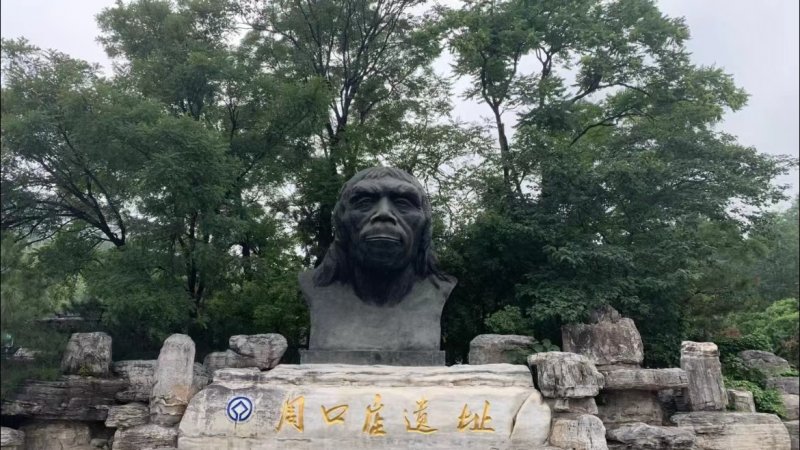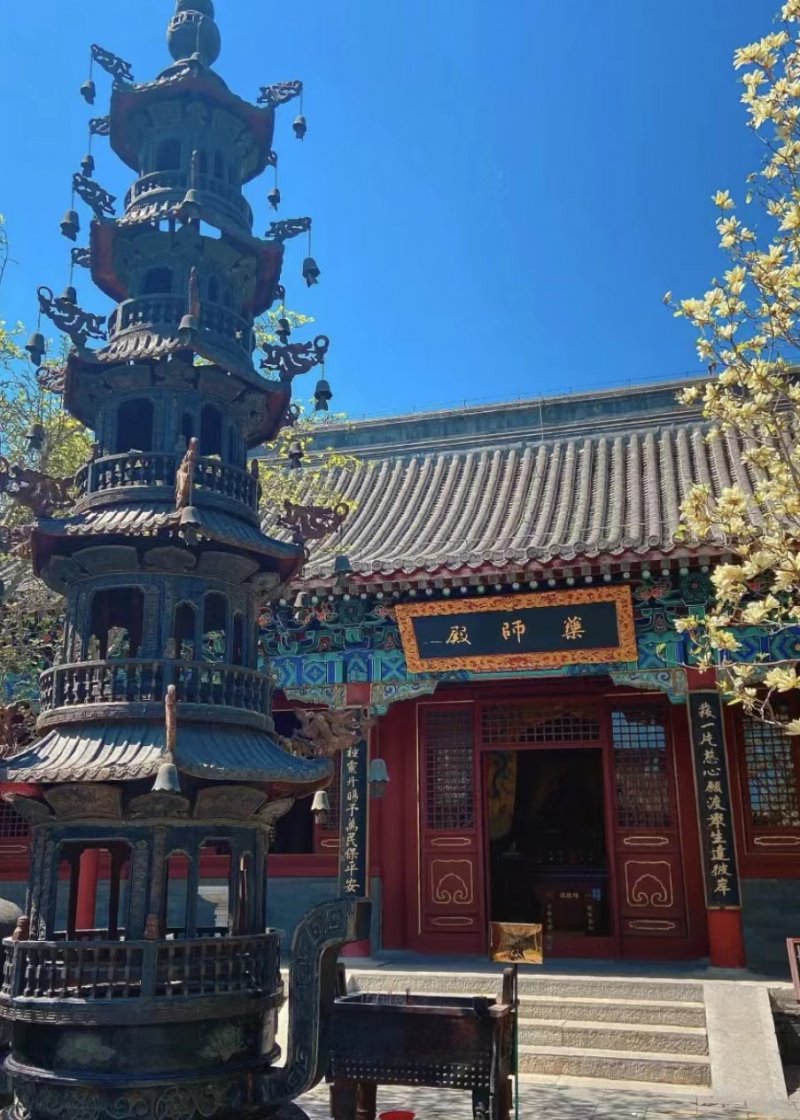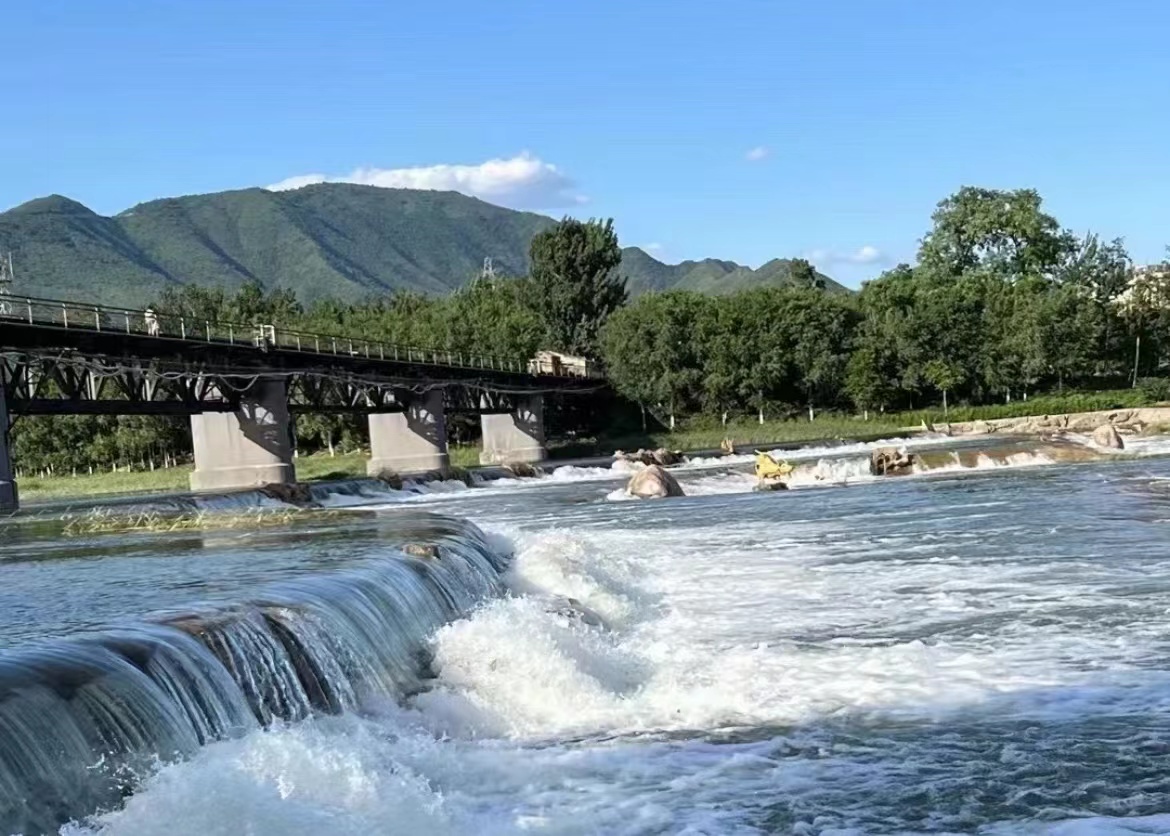A Sightseeing Guide for the Yongding River
Originally referred to as the Wuding River (lit.: "unfixed river"), the Yongding River is one of the four major rivers in the Haihe River system, which originates in... The Yongding, which flows through Mentougou, Shijingshan, Fengtai, Fangshan and Daxing districts in Beijing, is also the largest river flowing through the city, with a length of about 170 km and an area of nearly 3,200 square kilometers.
The Yongding River Cultural Belt also has diverse natural resources and rich historical and cultural sites. What are they?
Natural sites
Lingshan Scenic Area
The height of the peak that lends its name to this scenic area, at 2303 meters, has earned it the nickname Beijing's Everest. While the hike up might be a bit difficult -- though admittedly not up there with Everest -- the surrounding area is home to boundless flowers and grasslands, making it a pictaresque place to visit.

Baihua Mountain
Located in Mentougou District in western Beijing, this place is known as the natural botanical garden of northern China. When you get all the way to the top, you'll not only be able to witness magnificent scenery, but also take a big cleansing breath of fresh air.

Baiwangshan Forest Park
Located in the northwestern part of Haidian District, Baiwangshan is the closest forest park to downtown Beijing. In 2001, it was rated as a national AAA tourist attraction.

Miaofeng Mountain
Also situated in Mentougou District, this place is surrounded with abundant shrubs, flowers, and thousands of acres of roses. It was rated as a national AAA tourist attraction in 2005.

Fangshan Shidu Scenery Spot
This area, in southwestern Fangshan District, is known as the only place with a large-scale karst landform in northern China. It's certainly a strikingly beautiful place for nature lovers to spend a day at.

The Yongding River also has no shortage of of cultural and historical relics, and you'll find many places to explore to quench your thirst for history.
Historical sites
Zhoukoudian Historic Site Park
Located in Zhoukoudian, Fangshan District, this is a spot for anyone wanting to find out about what the paleolithic age was like in this region of China. In other words, it's home to the remains of the world famous Peking Man. Excavation of the area began in 1927, and the first skull aka Peking man was unearthed in 1929. In 1987, it was listed as a UNESCO World Cultural Heritage Site.

The Summer Palace
In 1750, Emperor Qianlong began to expand this garden to prepare for his mother's 60th birthday. It was completed in 1764 and was named 清漪园 Qīng yī yuán. The park was later burned down by the Anglo-French allied forces in the tenth year of Xianfeng in 1860 and rebuilt in 1888 and renamed 颐和园 Yí hé yuán, known in English as the Summer Palace. It was listed as a UNESCO World Cultural Heritage Site in 1998.

Badachu Park
Located in Shijingshan district, this place has eight ancient temples, including Chang’ an Temple, Lingguang Temple, and Zhengguo Temple. The Lingguang Temple is especially famous for housing the Buddha tooth relic (the only other recoginized Buddha tooth relic in the world is in Sri Lanka).

Yunju Temple
Known as Beijing’s Dunhuang, this place is famous for the cave that contains more than 15,000 stone carvings. For anyone who is interested in Buddhist culture, this place is a must-visit.

Read:Try Your Hand at Stand-Up Paddleboarding at These Locations
Images: Dianping

